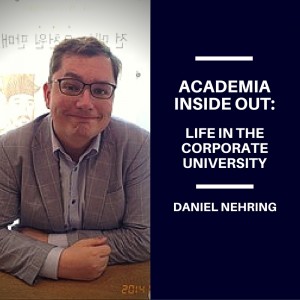2021: From Scholars to Disposable Labor in the Brave New World of Academic Capitalism

Yesterday, I received an offer to teach summer school for a higher education company that organizes offshore classes for Western universities in China. China’s ‘education fever,’ in part due to intense competition for social status and professional success in an age of diminishing opportunities (1, 2, 3), has turned the country into a lucrative market for profit-hungry universities and corporate hangers-on in the higher education marketplace (1, 2, 3).
Prior to the COVID-19 pandemic, the commercial exploitation of Chinese demand for foreign degree certificates proceeded to a large extent by funneling Chinese students to universities abroad, in places like the US, the UK, or Australia. The pandemic, alongside shadows of a ‘cold war’ between these countries and China, have disrupted international student flows from China outwards. Instead, there is growing demand, at least short-term, for locally provided classes taught by or on behalf of foreign universities. The Sino-foreign universities that have existed here for some time have sought to capitalize on this demand by expanding their teaching provisions, as have foreign universities that operate through corporate providers such as the one I mentioned above.

Back to my offer to teach summer school: It would have entailed a month’s worth of hybrid teaching on an introductory sociology module. On behalf of an American university, I would have taught four hours per week in a classroom somewhere in Shanghai. (I hear that WeWork facilities are one popular setting for such classes these days.) I would also have taught eight additional hours per week online, I would have prepared class materials to use for face-to-face and online teaching, I would have designed take-home exercises and assessment, marked coursework, and so on: all the regular contents of an intro to sociology, fit into four weeks. Full-time work to keep you really busy for a month.
So far so good. This kind of thing can be fun. I have done it a few times before, for universities where I was employed full-time already, and I have enjoyed it. Summer classes are a good way to get really immersed into a subject matter and work closely with students.
What made me turn down the job offer (and ask the person who contacted me to refrain from getting in touch ever again) was the financial compensation on offer: about half of what I received for a comparable amount of teaching as a graduate teaching assistant, without a PhD, more than a decade ago, and less than half of what the same university pays hourly-paid teaching staff at its main site in the US. With a little background research, I found out that, somewhat incredibly, every single student pays, per class, three times the amount their lecturers are paid. (That is to say, I would have received about 30 per cent of the per-module tuition fee of a single student, in a module of dozens of students). In a class of 40 or 50 students at least, there is a lot of profit to be made. Therefore, ultimately, the job offer seemed disrespectful and certainly not worth anyone’s time. The problem – and the reason for me writing this piece – is that this is not a one-off occurrence. I receive multiple offers of this kind every year, as do many of my colleagues in Shanghai. Every time, the opportunity at hand seems interesting at first glance, but every time the payment on offer does not begin to reflect the time and effort and thought and intellectual creativity that motivate university-level teaching. For that matter, the payment on offer never reflects the high cost of living in a city like Shanghai, either. It is hard to avoid the conclusion that, at least in some circles, China-based academics are regarded as disposable cheap labor.
There is much more to be said about this. What I described is no isolated or trivial incident. Rather, it illustrates a much larger problem in the organization of academic labor, and in the power structures by which higher education is governed today. In terms of the organization of academic labor, higher education is ever more sharply divided between, on the one hand, an advantaged minority in full-time, long-term employment and, on the other hand, academia’s reserve army of labor, dependent on teaching gigs of the sort I just had the privilege to turn down. In terms of the power structures that underpin higher education governance, scholars, nominally central to what a university is, seem increasingly disempowered and marginal, a few star academics aside. Low salaries and teaching in WeWork offices are emblematic of the kind of the kind of McJobs on which too many scholars’ livelihoods depend today.
This seems to me a global trend, not limited to China (even though local demand for and international supply of foreign degrees in its hyper-competitive education system illustrate the issue particularly well). Just the other day, for instance, a British acquaintance told me that his university, heavily indebted to a US hedge fund, was getting ready for a round of department closures and redundancies in the humanities and social sciences, releasing scores of scholars into precarity. Look at academic systems elsewhere and you will find many more examples of an inexorable shrinkage of stable, meaningful academic work.
The COVID-19 pandemic has deepened a profound crisis in global higher education, by accelerating the casualization of academic labor, bound up with the shift of teaching away from campuses, onto online platforms. It might be hoped that this crisis might curb the worst excesses of academic capitalism and for-profit higher education. However, experiences such as the ones I have described here suggest that things may get much worse before they get better.





















































































